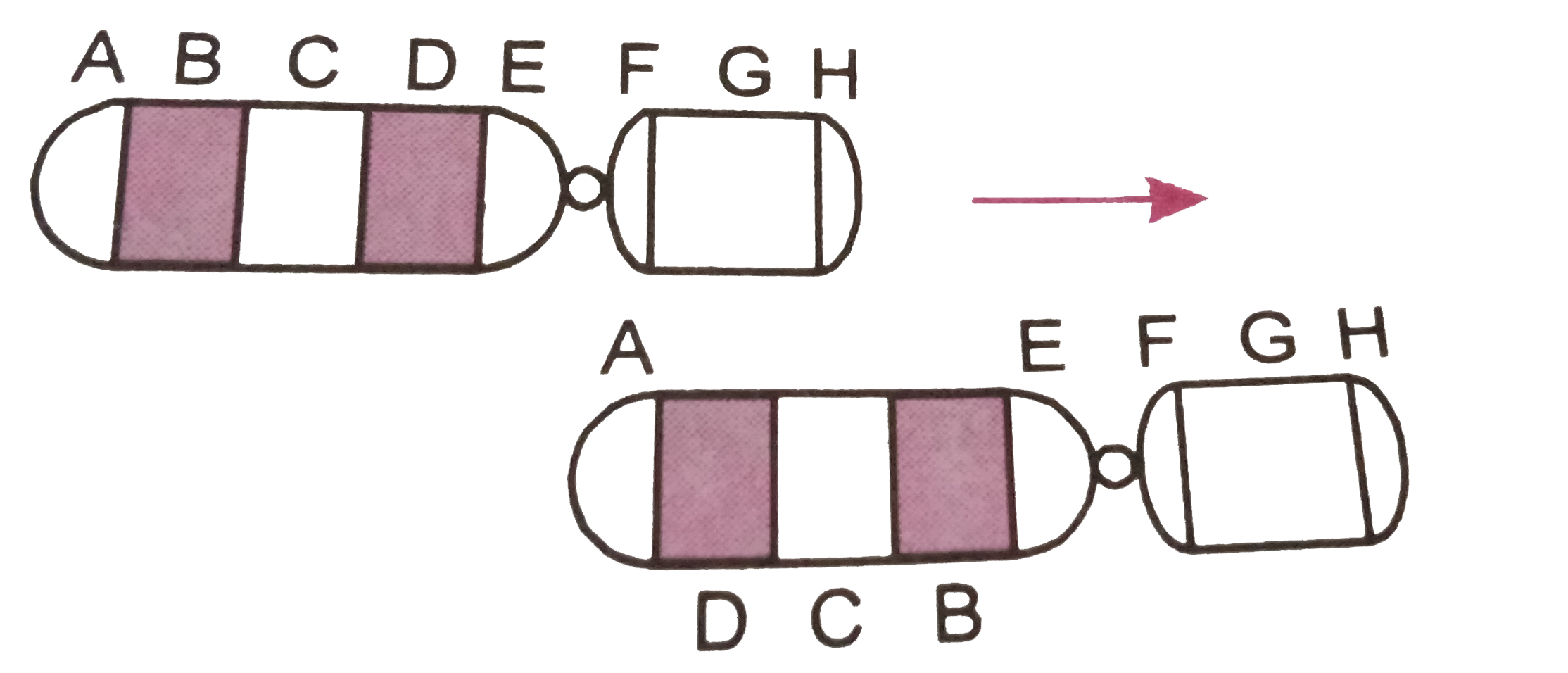If a part of chromosome gets separted and reattached in reverse positoion to the same chromosome, the mutation is called
Inversion
Transverion
Transloction
Gene mutation
The correct Answer is:A
To solve the question, we need to identify the type of mutation that occurs when a part of a chromosome gets separated and reattached in reverse position to the same chromosome. Let's break down the solution step by step:
1. Understanding Chromosomal Mutations:
- Chromosomal mutations involve changes in the structure of chromosomes. These can include deletions, duplications, inversions, and translocations.
2. Identifying Inversion:
- Inversion is a specific type of chromosomal mutation where a segment of a chromosome is removed, rotated 180 degrees, and then reattached to the same chromosome. This results in the genes in that segment being in reverse order.
3. Analyzing the Question:
- The question states that a part of a chromosome gets separated and reattached in reverse position to the same chromosome. This description matches the definition of inversion.
4. Evaluating Other Options:
- Transversion: This refers to a point mutation where a purine is replaced by a pyrimidine or vice versa. It does not involve chromosomal segments.
- Translocation: This involves the exchange of segments between non-homologous chromosomes, which is not the case here.
- Gene Mutation: This is a broader term that includes various types of mutations, but it does not specifically describe the rearrangement of a chromosome segment.
5. Conclusion:
- Based on the definitions and the analysis, the correct answer to the question is inversion.
Final Answer:
The mutation is called inversion.
---
- Chromosomal mutations involve changes in the structure of chromosomes. These can include deletions, duplications, inversions, and translocations.
- Inversion is a specific type of chromosomal mutation where a segment of a chromosome is removed, rotated 180 degrees, and then reattached to the same chromosome. This results in the genes in that segment being in reverse order.
- The question states that a part of a chromosome gets separated and reattached in reverse position to the same chromosome. This description matches the definition of inversion.
- Transversion: This refers to a point mutation where a purine is replaced by a pyrimidine or vice versa. It does not involve chromosomal segments.
- Translocation: This involves the exchange of segments between non-homologous chromosomes, which is not the case here.
- Gene Mutation: This is a broader term that includes various types of mutations, but it does not specifically describe the rearrangement of a chromosome segment.
- Based on the definitions and the analysis, the correct answer to the question is inversion.
The mutation is called inversion.
Topper's Solved these Questions
- CHROMOSOMAL BASIS OF INHERITANCEBOOK - DINESH PUBLICATION ENGLISHCHAPTER - CHROMOSOMAL BASIS OF INHERITANCEEXERCISE - Check Your Grasp
57 Videos
- CHORDATA- PROTOCHORDATABOOK - DINESH PUBLICATION ENGLISHCHAPTER - CHORDATA- PROTOCHORDATAEXERCISE - CYG
11 Videos
- COELENTERATA AND CTENOPHORA (OR CNIDARIA AND ACNIDARIA)BOOK - DINESH PUBLICATION ENGLISHCHAPTER - COELENTERATA AND CTENOPHORA (OR CNIDARIA AND ACNIDARIA)EXERCISE - CYG
10 Videos
Similar Questions
Knowledge Check
All gens located on the same chromosome
Aform different groups depending upon their relative distanceBform one linkage groupCwill not from any linkage groupsDfrom interactive groups that affect the phenotype
Genes on same chromosome can be
View SolutionAll genes located on the same chromosome.
View SolutionAll genes located on the same chromosome:-
View SolutionBasic set of chromosome number is called
View SolutionGiven in the figure is chromosomal mutation It is

View SolutionWhat is meant by chromosomal mutation?
View SolutionA change in the chromosome number is called
View Solution
